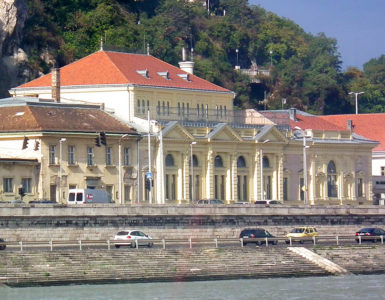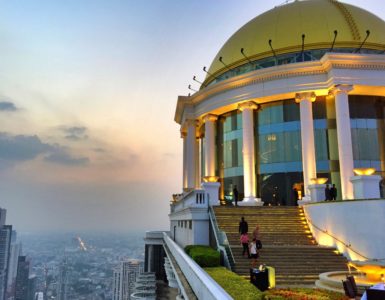I’m in the back seat of a car, hurtling toward Pachacamac (say, “pa-cha-CAHM-ack“), the pyramid complex about twenty-five miles outside of Lima.
The modern storefronts and well-tended flowerbeds of Miraflores quickly give way to broad, chaotic stretches of highway and block after block of gritty shops and sagging homes. In the Chorrillos neighborhood, we pass a long line of visitors waiting outside the green-tiled walls of the Santa Monica women’s prison. Slowly, slowly, the city unravels, peeling away from the road, and giving us our first glimpse of Lima’s infamous shanty towns.
Rodrigo, our guide from Peruvian Local Friends, turns around in the front seat and explains: “Most of them come here from the Andes, but they cannot afford to live in the city. So they build what they can, using mud bricks and whatever they can find. No running water — trucks with tanks come through, and people stand in line to get water — but, oddly, many have cable t.v.!” He shakes his head. “They are Peruvians, and they have a right to be in their country, but it is a desperate situation.”
And then, almost before it seems possible, we arrive at Pachacamac, a vast archeological site wedged between the verdant Lurin river valley, a riding club, a well-tended graveyard, and the rag-tag little city of Lurin:
There are at least seventeen pyramids here, blended into the desert landscape by wind and sand and time. The little town is built on top of one; others, still buried, look like little more than steep, rounded dunes. A series of archeologists have restored bits and pieces of the site, including our first stop, the ramped pyramid:
The site has a long history. The Lima culture built the first temples here about 200 A.D., dedicated to Pachacamac, the god “who animates the world.” The Wari peoples arrived around 650 A.D., expanding the complex to include administrative buildings and the exquisite “painted temple.” As the site grew, Pachacamac’s influence grew with it. By the time the Incas arrived, Pachacamac — and the oracle associated with his presence — were considered so powerful, the Inca allowed him to co-exist with their own sun god, Inti.
The Inca built the Temple of the Moon, where the female servants of Inti lived in an elaborate segregated cloister:
And, on the highest point, overlooking the sea, the blazing Temple of the Sun, with a bright red paint job that, despite six hundred years of exposure, is still evident:
But then, sadly, the Spanish arrived in 1532, easily taking over the complex, desecrating the temples, burning the gods, and killing off the local population, either directly (by slaughtering them) or indirectly (by giving them smallpox). After that wave of devastation, a city that had persisted for 1300 years before being “discovered” by Pizarro faded slowly back into the desert, forgotten until archeologists Adolph Bandelier, Ernst Middendorf and Max Uhle uncovered it in the 19th century.
On the drive back into town, I gaze out at the tumble-down shanty towns and wonder: when will our own civilization’s “Conquistadors” arrive, destroying our temples, stealing our gold, and leaving our gleaming cities to fade back into the landscape?









Add comment